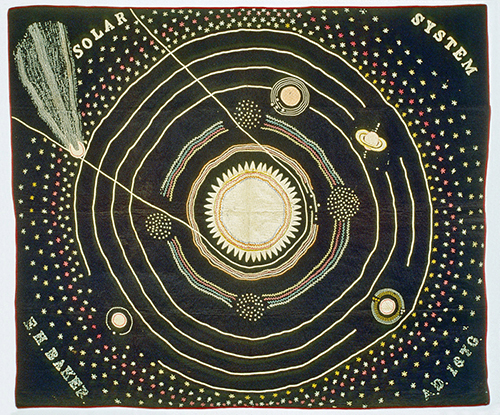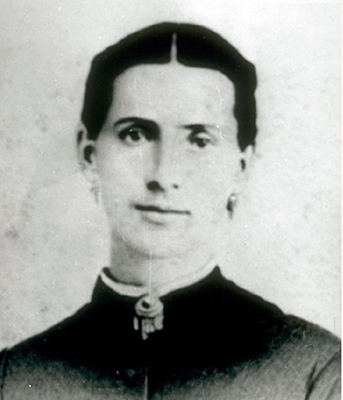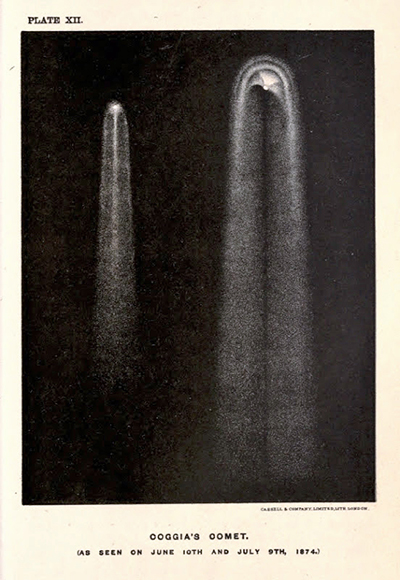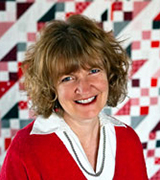In the 19th century in the United States, the majority of women had little access to higher learning and even those who did have an education had few opportunities to develop an interest in the sciences.

Oddly enough, astronomy seems to have been the outlier to that situation, and there are several accounts from that era of educated girls not only being encouraged to “sweep the stars” but of their making significant contributions to astronomical knowledge. In the 1870s, Ellen Harding Baker (1847-1886), a teacher in rural Iowa, was fascinated with astronomy and came up with a novel way to teach it to her students: she made a quilt of the solar system as it was known at that time.

In the summer of 1874, a comet (named for the French astronomer, Jérôme Coggia) was visible in the Midwest to the naked eye for several months. During those months, an amateur astronomer in Chicago put a powerful telescope on a building on the shore of Lake Michigan and invited the public to use it. Certainly, Ellen would have been able to see the comet in the night sky where she lived, and it is known that she traveled to Chicago in order to view it through a telescope. Two years after seeing Coggia’s Comet, she began her solar system quilt.

As a mother of seven and wife of a mercantile owner in addition to her teaching duties, Ellen did not have much extra time. It took her seven years to complete her solar system quilt. Using illustrations in astronomy books of the period as the basis for her design, Ellen appliquéd the Sun in the quilt’s center and Mercury, Venus, Mars, and the Earth and its moon in their orbits around it.
Next, she showed an asteroid belt, then Jupiter, Saturn with its rings, Uranus, and Neptune (with their known moons depicted as tiny dots) all in their orbits. Many embroidered stars complete the image. The Coggia comet featured prominently. She used wool fabrics and cotton batting and she embellished the quilt with details in wool braid and wool and silk embroidery. Ellen titled the piece Solar System, signed it “E.H. Baker,” and dated it “A.D. 1876,” which is the year she started it.
According to the Smithsonian National Museum of American History, which is where Ellen’s quilt now resides, “The Solar System quilt was probably completed in 1883 when an Iowa newspaper reported that “Mrs. M. Baker, of Lone Tree, has just finished a silk quilt which she has been seven years in making.” The article went on to say that the quilt “has the solar system worked in completely and accurately. The lady went to Chicago to view the comet and sun spots through the telescope that she might be very accurate. Then she devised a lecture in astronomy from it.”
The report was syndicated widely in newspapers throughout the United States with the New York Times picking it up in the fall of 1883. The Times was condescending in its reporting of Ellen’s quilt, describing it as “a somewhat comical statement.”
Despite her effort being dismissed in certain quarters, Ellen used her Solar System quilt as a visual aid for astronomy lectures that she gave in Iowa. In an era when books on that subject would have been hard for many rural people to access, the quilt doubtless gave those who saw it a representation that they could understand, learn from, and appreciate. At a time when women’s intellectual accomplishments were not infrequently denigrated, Ellen Harding Baker’s Solar System quilt stands as a tangible rebuttal to the naysayers.



